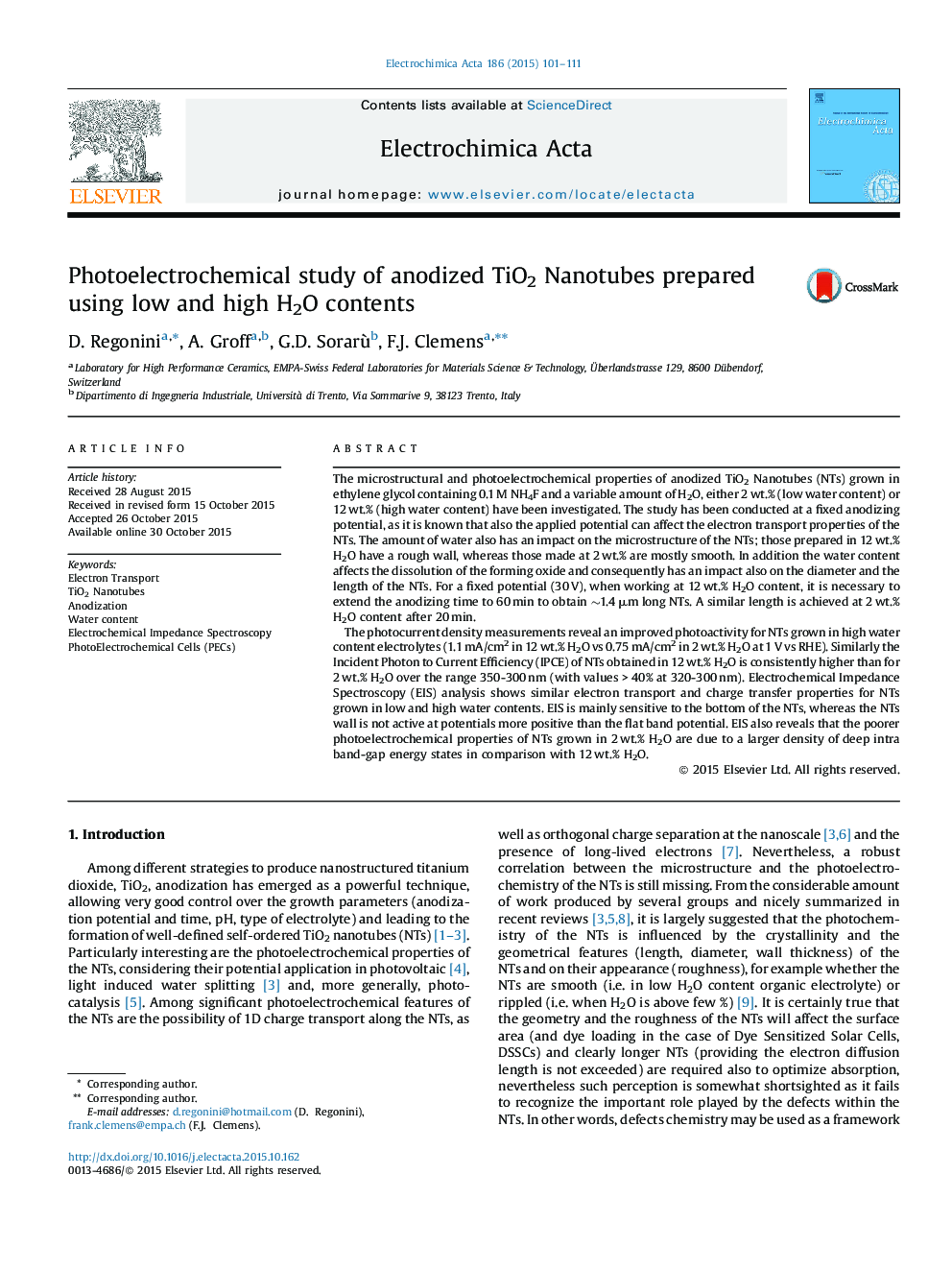| کد مقاله | کد نشریه | سال انتشار | مقاله انگلیسی | نسخه تمام متن |
|---|---|---|---|---|
| 183546 | 459554 | 2015 | 11 صفحه PDF | دانلود رایگان |

The microstructural and photoelectrochemical properties of anodized TiO2 Nanotubes (NTs) grown in ethylene glycol containing 0.1 M NH4F and a variable amount of H2O, either 2 wt.% (low water content) or 12 wt.% (high water content) have been investigated. The study has been conducted at a fixed anodizing potential, as it is known that also the applied potential can affect the electron transport properties of the NTs. The amount of water also has an impact on the microstructure of the NTs; those prepared in 12 wt.% H2O have a rough wall, whereas those made at 2 wt.% are mostly smooth. In addition the water content affects the dissolution of the forming oxide and consequently has an impact also on the diameter and the length of the NTs. For a fixed potential (30 V), when working at 12 wt.% H2O content, it is necessary to extend the anodizing time to 60 min to obtain ∼1.4 μm long NTs. A similar length is achieved at 2 wt.% H2O content after 20 min.The photocurrent density measurements reveal an improved photoactivity for NTs grown in high water content electrolytes (1.1 mA/cm2 in 12 wt.% H2O vs 0.75 mA/cm2 in 2 wt.% H2O at 1 V vs RHE). Similarly the Incident Photon to Current Efficiency (IPCE) of NTs obtained in 12 wt.% H2O is consistently higher than for 2 wt.% H2O over the range 350-300 nm (with values > 40% at 320-300 nm). Electrochemical Impedance Spectroscopy (EIS) analysis shows similar electron transport and charge transfer properties for NTs grown in low and high water contents. EIS is mainly sensitive to the bottom of the NTs, whereas the NTs wall is not active at potentials more positive than the flat band potential. EIS also reveals that the poorer photoelectrochemical properties of NTs grown in 2 wt.% H2O are due to a larger density of deep intra band-gap energy states in comparison with 12 wt.% H2O.
Scheme illustrating the lower density of deep energy states in NTs grown in 12 wt.% H2O. As a result, such NTs exhibit efficient electron transport properties. In contrast electron transport is difficult in the case of 2 wt.% H2O NTs as the density of deep states, acting as recombination center, is larger.Figure optionsDownload as PowerPoint slide
Journal: Electrochimica Acta - Volume 186, 20 December 2015, Pages 101–111